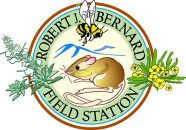Cerny-Chipman, Kathryn (2009)
Coastal Sage Scrub Restoration: Can Allelopathy Be Used as a Method of Invasive Species Control? Bachelor of Arts, Pomona College, Environmental Analysis.
Advisor: Frances Hanzawa.
Coastal sage scrub is a highly endangered habitat that is greatly threatened by the introduction of non-native species. Invasive species often alter the environmental conditions to be less beneficial to native species. This can include an alteration in the fire cycle, nutrient or water availability, and light availability. Many different management techniques are available for combating non-native species, including mowing, herbicide use, grazing, fire control, and solarization. However many of these techniques have drawbacks that have made them less than ideal for use in coastal sage scrub. Allelopathy, or the chemical inhibition of the growth or germination of one plant by another offers the possibility of an effective, low cost and non-toxic method of invasive control. The effect of an allelopathic solution made from Artemisia californica, a coastal sage scrub native, was tested on two native and two invasive species. The sagebrush solution was found to be effective in inhibiting the germination of a non-native forb, Brassica nigra, but had no effect on the growth or germination of a non-native grass, Bromus rubens. This indicates that solution made from the allelopathic Artemisia californica could be used in areas where non-native forbs are prevalent, or in conjunction with grass-specific herbicide, which has been found to be ineffective against non-native forbs. This offers the possibility of a low-cost and non-toxic management solution that utilizes chemicals in the environment.
